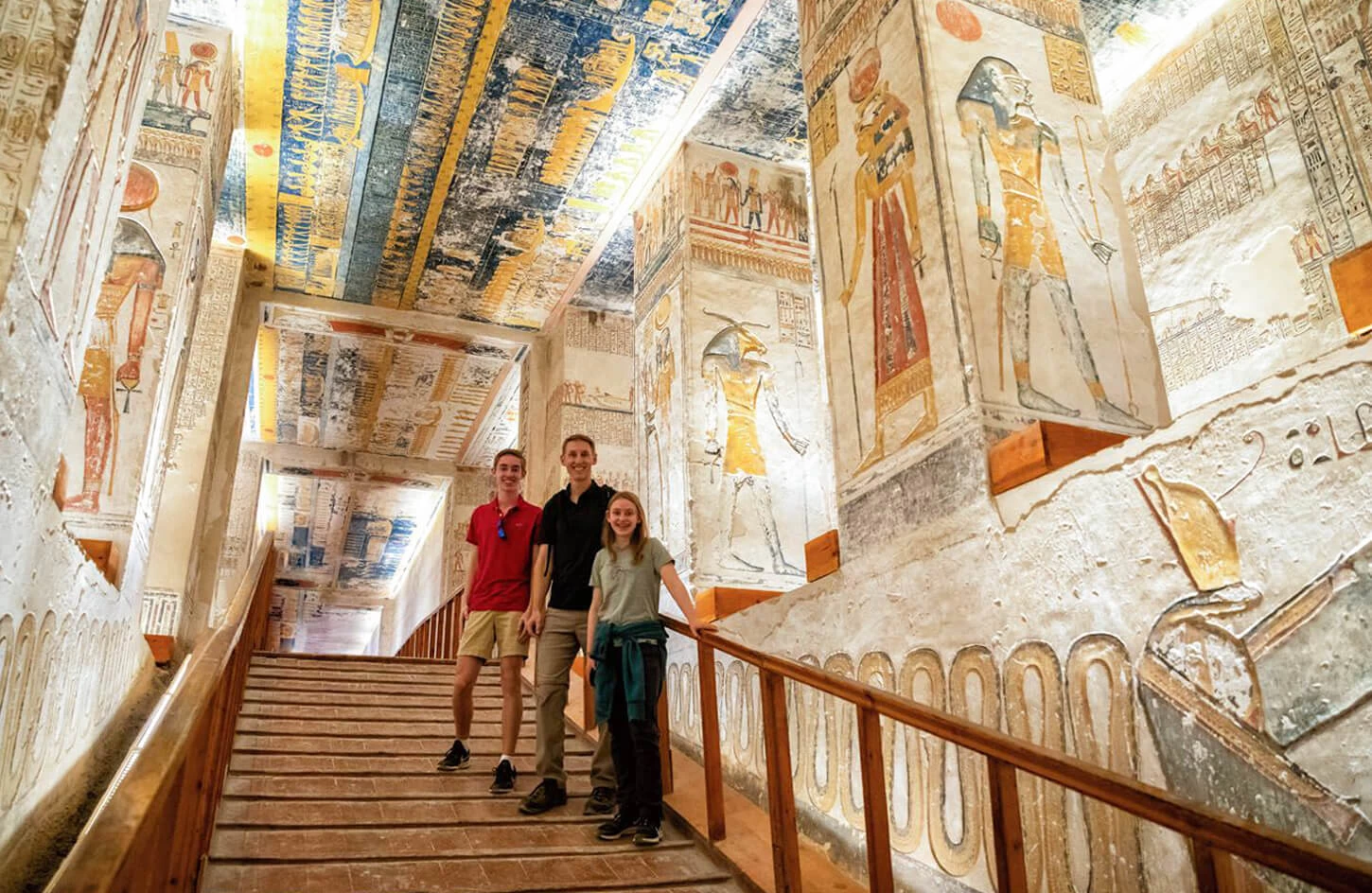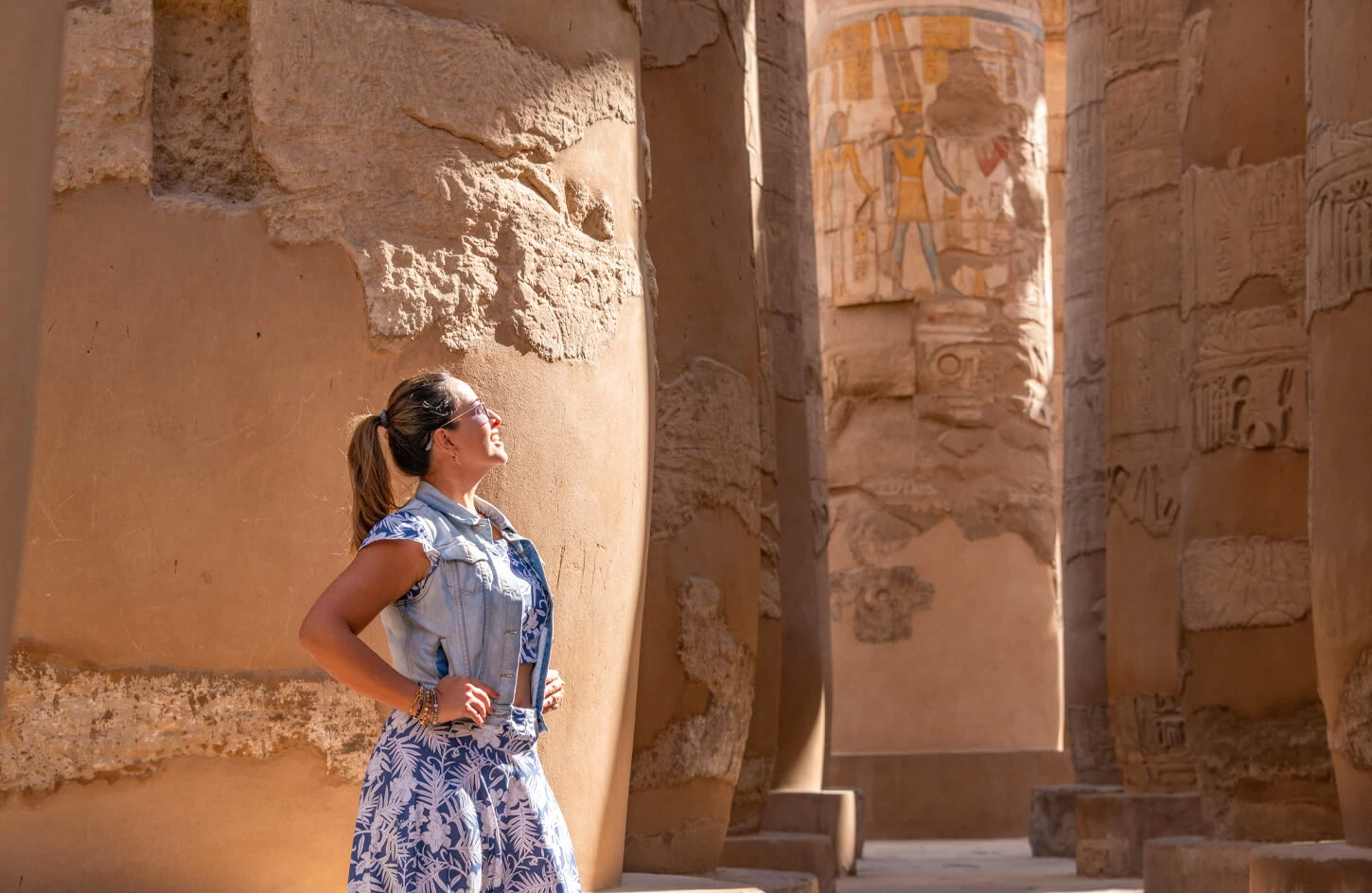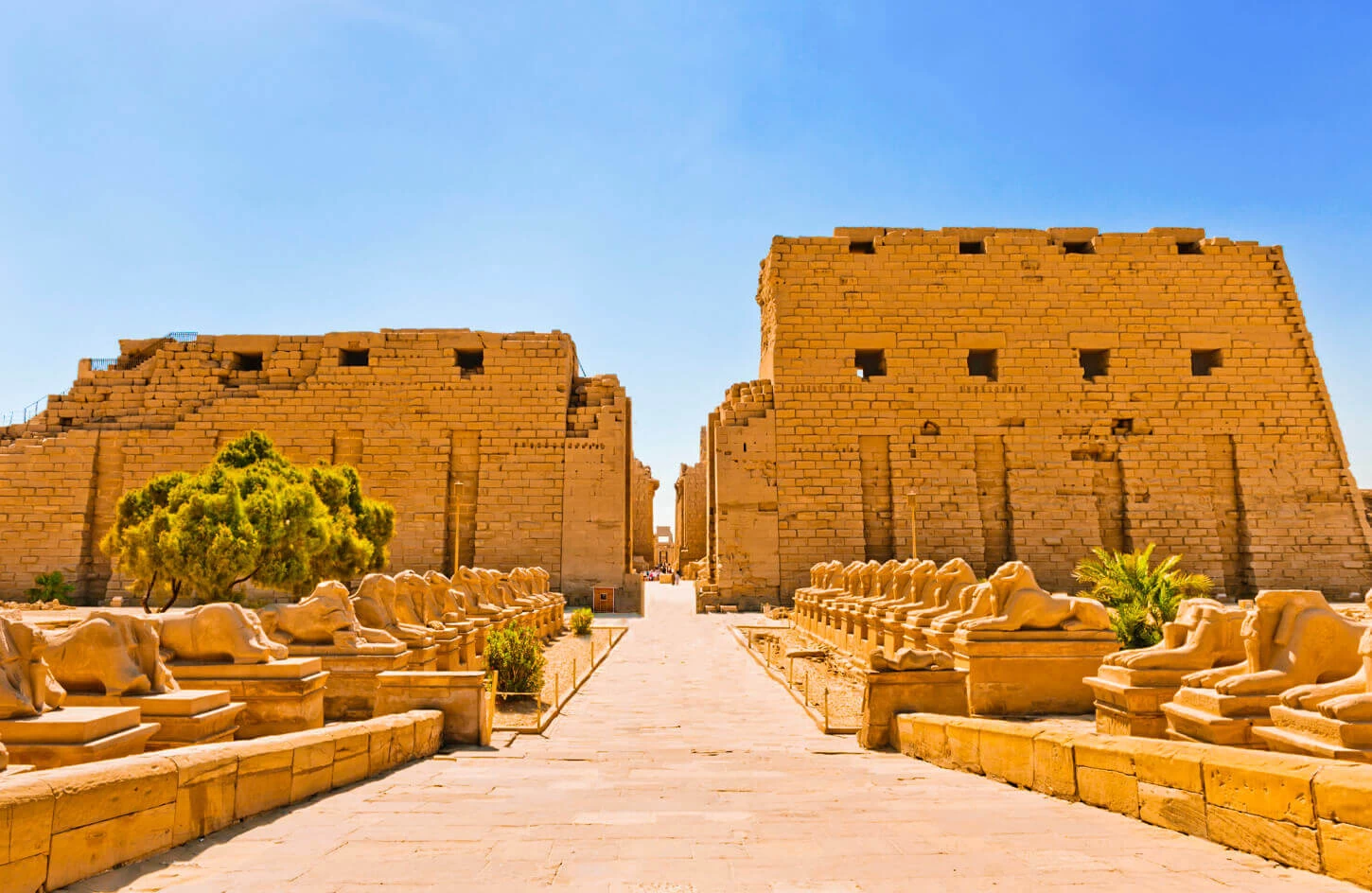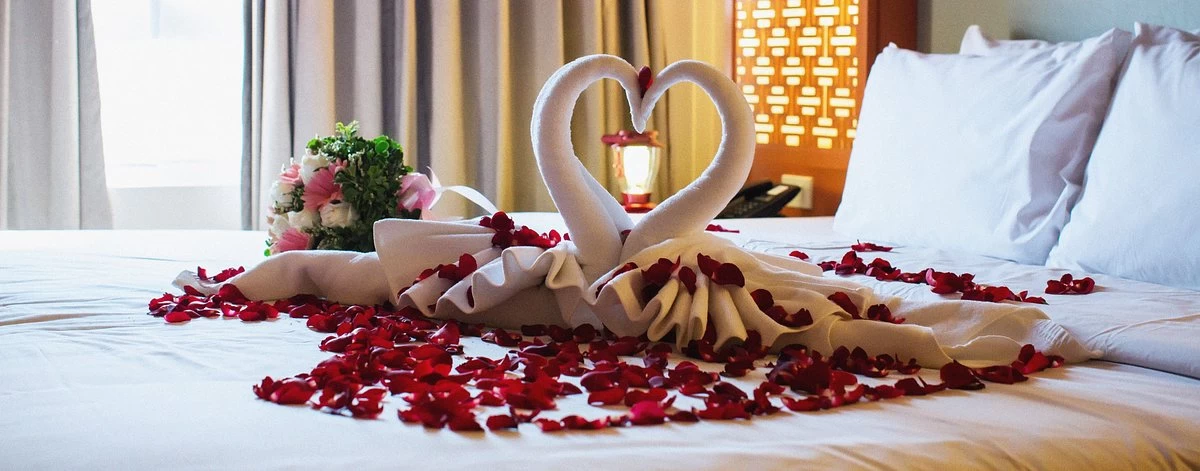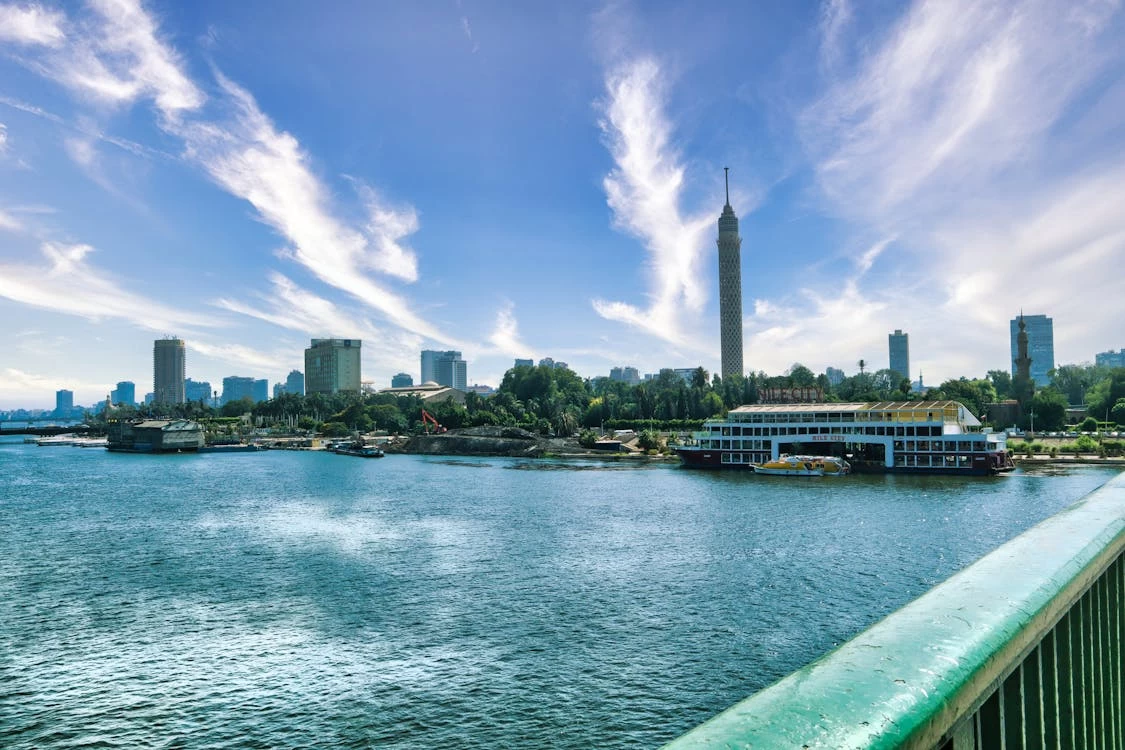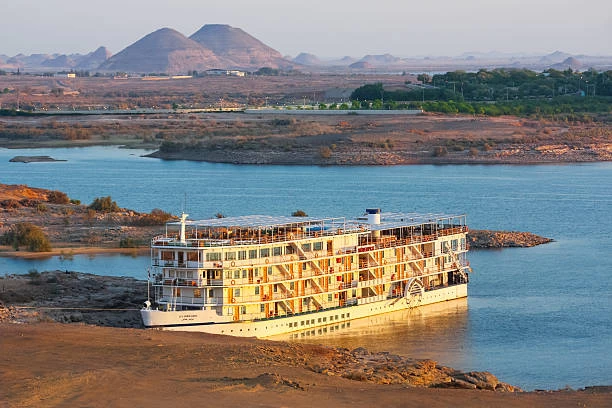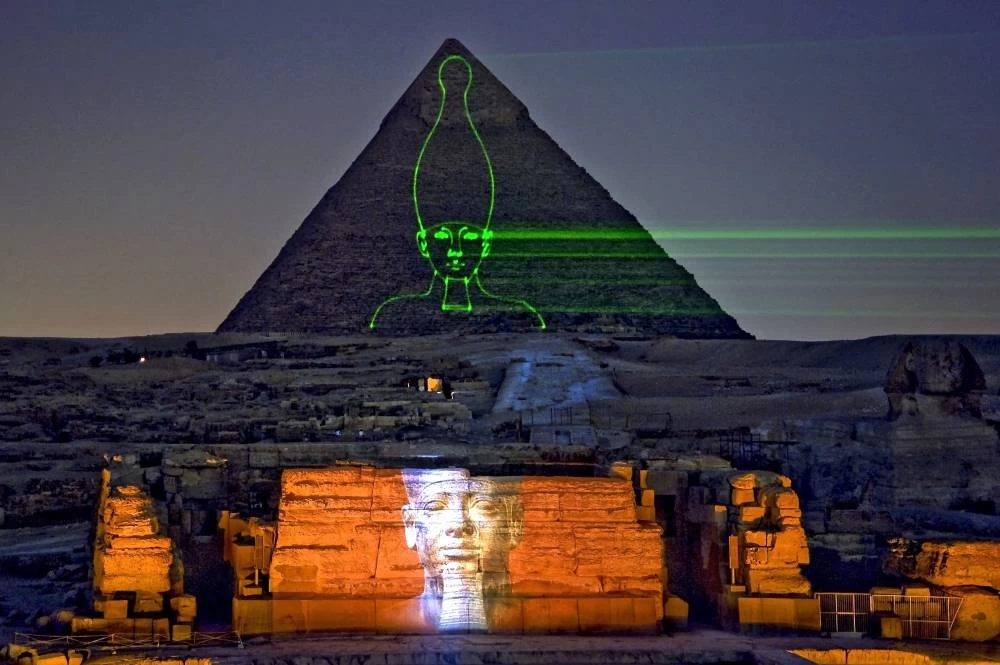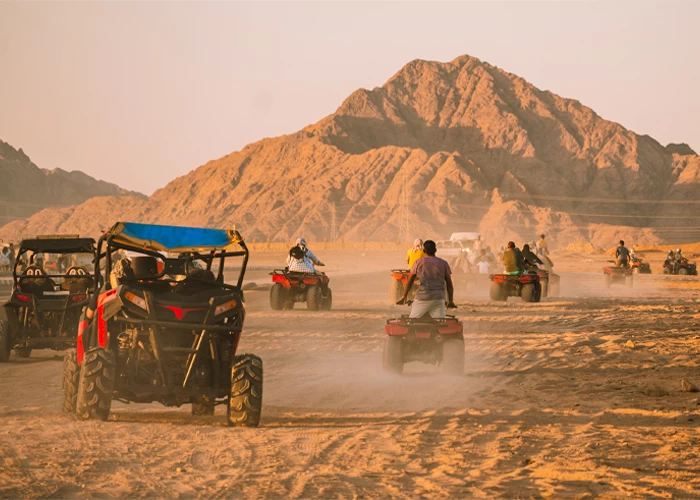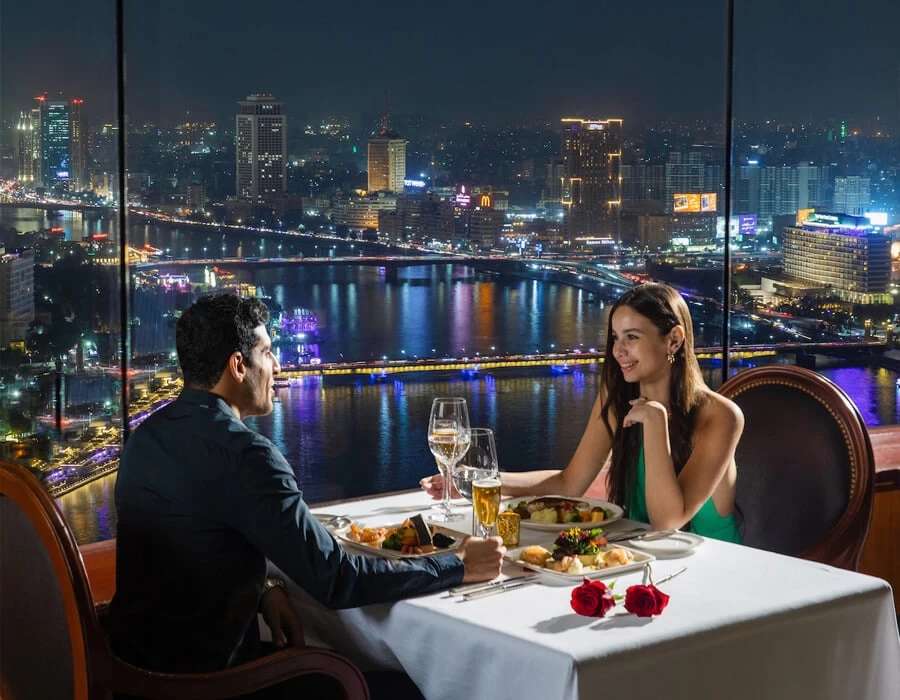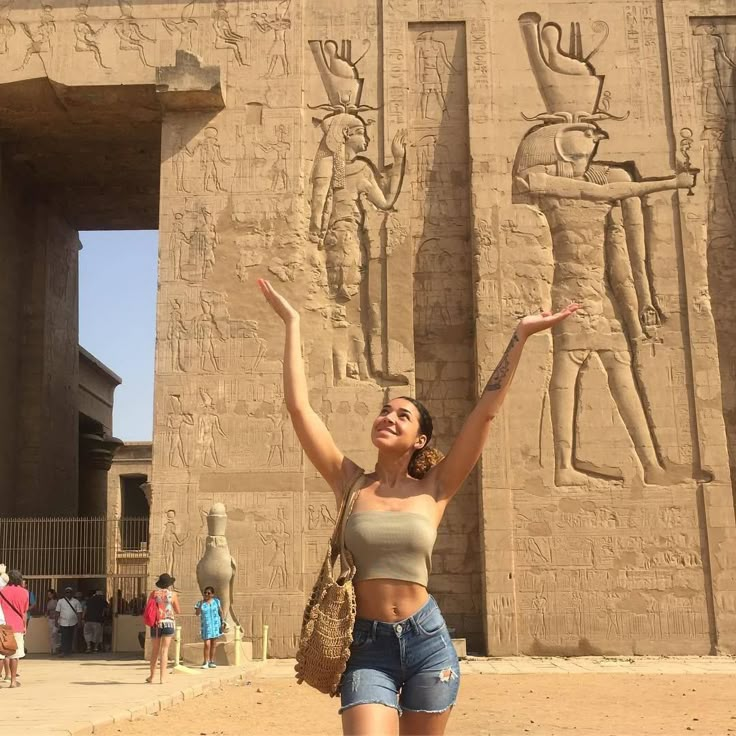Luxor East Bank
-webp.webp)
The East Bank of Luxor is an endless source of ancient Egyptian history and thus invites visitors to witness the splendor of pharaonic civilization. This lively area, located along the banks of the Nile River, is home to Egypt's most famous temples and cultural sites. In this blog, we shall discuss five attractions that must be visited on Luxor's East Bank, each granting a different insight into Egypt's culture.
Karnak Temple Complex
Karnak Temple Complex, among the world's largest temples devoted to religious worship, is a site in Luxor that must be visited. The temple was dedicated to the Theban triad of Amun, Mut, and Khonsu, and it was constantly expanded over a period of 2000 years.
Key Features:
- Great Hypostyle Hall: Massive with 134 columns, the central columns rise almost to 20 meters.
- Sacred Lake: Used for purification ceremonies.
- Sacred Scarab: A statue believed to confer good luck to anyone who circles it seven times.
Karnak Temple is a spectacular site, offering an array of experiences, with some areas small and quiet while others are grand and overwhelming.
Luxor Temple
Luxor Temple is right in the heart of Luxor, and it is a temple meant for the rebirth of kingship. This temple was built by Amenhotep III and later added on by Ramses II; this temple is one of the best-preserved ancient monuments within Egypt.
Key Features and Attractions:
- Avenue of Sphinxes: This is used to connect with Karnak Temple for the enlarged processional way.
- Night Illumination: The night show beautifully adorns this temple while making it worth experiencing.
Luxor Temple looks its most magnificent and impressive at night when the statues and columns become aglow under lights, creating an inimitable atmosphere.
Luxor Museum
The Luxor Museum is the perfect place for anybody interested in the deep history and archaeology of the city of Luxor. It holds a collection of artifacts from the Luxor Temple and other important sites in the area.
Highlights:
- Reconstructed wall from the Temple of Aten.
- Artifacts from the Tomb of Tutankhamun.
- Statues of the Pharaohs and of famous characters from history.
This museum displays the ancient Egyptians' day-to-day lives, their art, culture, and society.
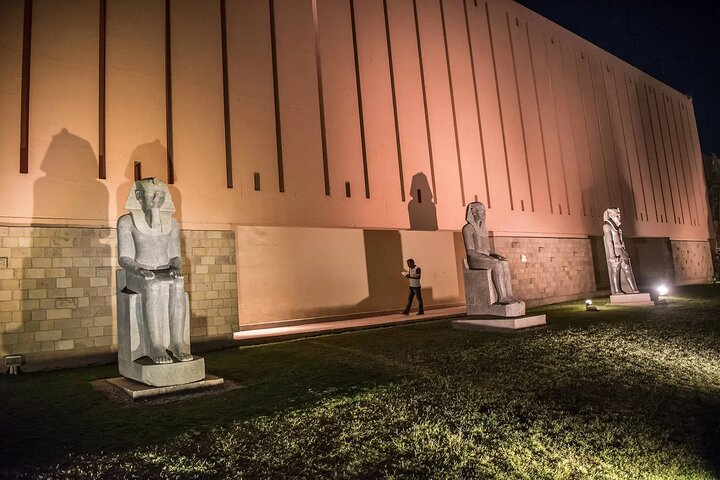
Mummification Museum
The Mummification Museum in Luxor provides unique insight into this ancient Egyptian practice of mummification. It is a museum purely dedicated to conserving the most symbolic aspect of life in ancient Egypt: the mummification of bodies for afterlife purposes.
Key Exhibits:
- Mummies: Currently on display, they comprise both human and animal mummies.
- Embalming Instruments: Used to preserve the bodies of deceased individuals.
- Artifacts: Insight into the specific religious and cultural practices that are associated with mummification.
This museum provides a deep dive into the rituals and practices surrounding one of ancient Egypt's most intriguing traditions.
Avenue of Sphinxes
Avenue of Sphinxes It is the historic avenue linking Luxor and Karnak temples. Rediscovered and partially restored in recent years, this avenue will take you where the feet of ancient processions once walked.
Some features include:
- Hundreds of Sphinx Statues: They line the avenue, representing the Pharaoh's power.
- Renovation Efforts: It is now open to the public to walk this once grand pathway that was used for large religious festivals.
This avenue offers everything a history buff wants—from the chance to do his part in Luxor's ancient tradition to see all sites and end with a two-mile walk.
The East Bank of Luxor proposes a legacy permeating with life and history; indeed, each site presents an opportunity for the visitor to have a glimpse into the past. From the colonnade of Karnak Temple to the exhibits in all their splendid quietus in the Luxor Museum, East Bank surely offers the visitor ample opportunity to cherish the grandeur of ancient Egyptian civilization. Whether historians or inquisitive wanderers, East Bank will etch memories for a lifetime.
As one of Egypt's prime cultural sites, Luxor's East Bank is a mandatory stop for anyone visiting Egypt. It offers temples, museums, monuments, and ancient pathways as a golden opportunity to engage with the past and gain insights into Egypt's ancient heritage. No Egypt tour would be complete without a visit to Luxor's East Bank.
